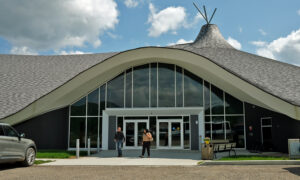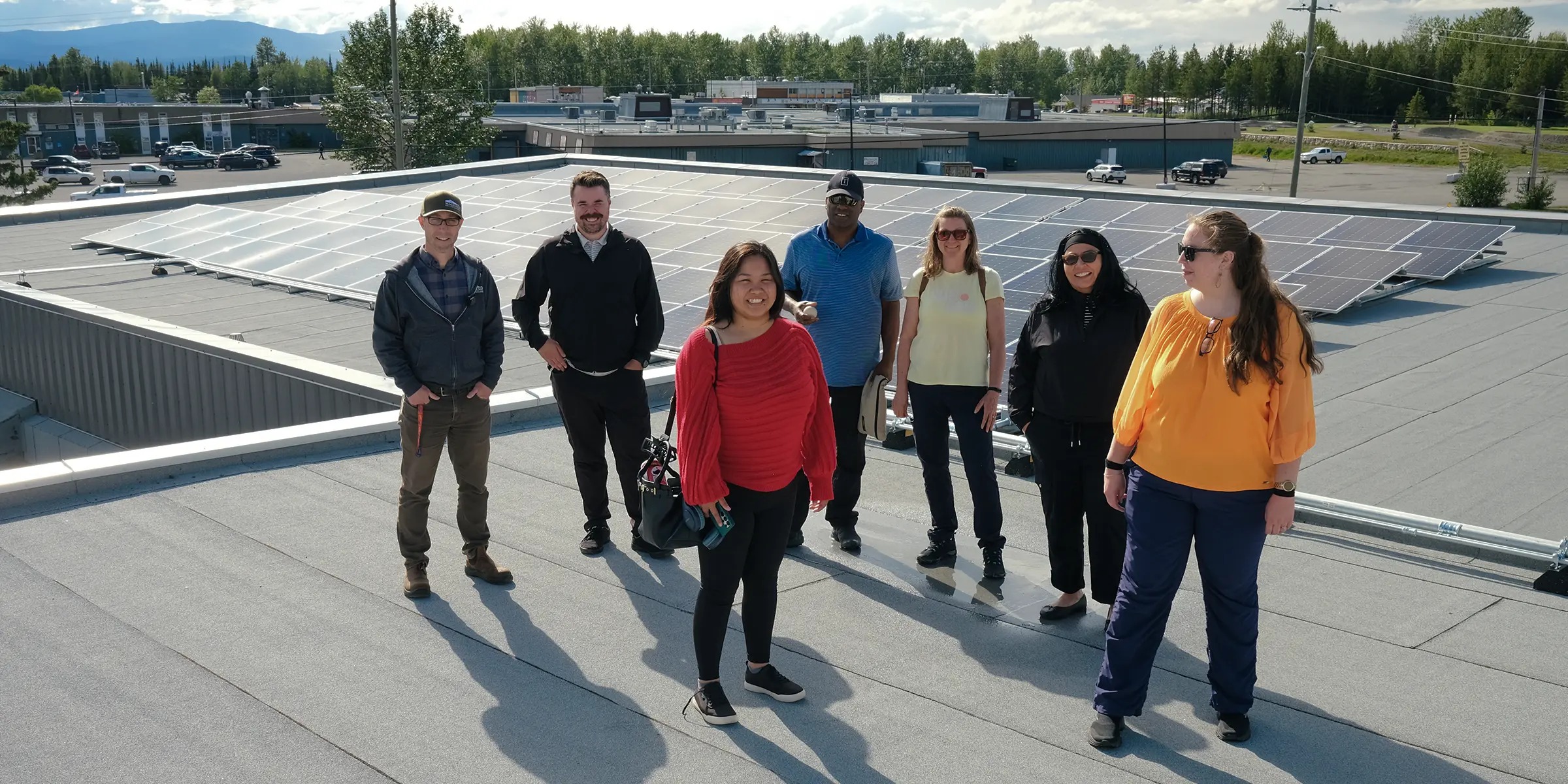
How the District of Mackenzie's failing arena floor led to a whole new solar-powered energy system
Case Study
Published: May 28, 2025
Updated: n/a
Relevant Topics: Policy, Transportation
The need to replace a failing arena floor in the local rec centre prompted the District of Mackenzie to source external funding that allowed the new arena floor to incorporate a heat recovery system powered by solar panels that is dramatically reducing energy and water consumption, reducing operating costs, and contributing to the longevity of this critical piece of civic infrastructure.
How did they do it?
- A creative administration with support from Mayor and Council used the replacement of the arena floor as an opportunity to change the scope of the project to make it more amenable to receiving external funding. This led to the development of the heat recovery system in tandem with the arena floor replacement.
- The municipality secured external funding amounting to 72% of the total project cost of $3.7 million.
Feature Photo: Terry Gilmer (far left), Director of Recreation Services for the District of Mackenzie, leads a tour of the local Recreation Centre showcasing the roof-top solar panels that power a new, energy-efficient heat recovery system in the facility.
Published: Sep. 4, 2025
Updated: n/a
Relevant Topics: Solar
Climate Zone: 7a
Context
Mackenzie is located in BC climate zone 7a and can experience temperature swings as much as 80 degrees Celsius from the coldest (-44 degrees) to the hottest (+36) days recorded. It receives about 1800 hours of sunshine per year.
The District of Mackenzie was incorporated as a municipality in 1966 and is located at the south end of Williston Lake, which was created following the construction of the WAC Bennett Dam. The local economy has been reliant on logging and forest product manufacturing but recent mill closures have been a challenge for the community, which saw a population decline of nearly 12% from 2016 to 2021. The current population is estimated at just over 3,000, roughly half of what it was at its peak in the 1980s and 90s.
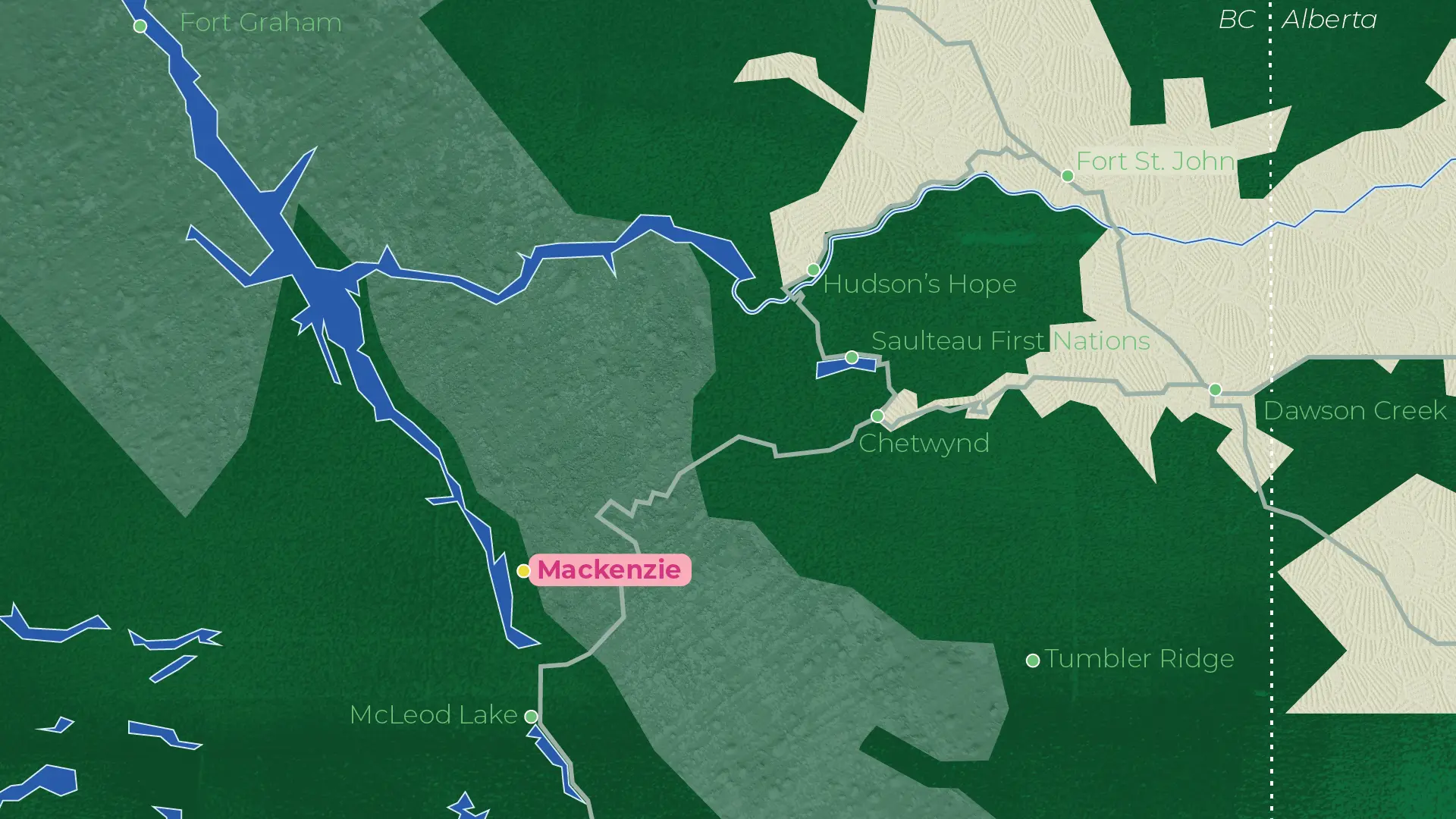
Contributors

Rob van Adrichem
Director of External Relations
Community Energy Association
Local Realities
Why Mackenzie initiated its solar project
The shrinking local population and declining tax base require that the municipality must be creative in identifying cost savings and/or new sources of revenue in order to maintain its services and amenities. In Mackenzie, the failing arena floor in the 50-year old arena threatened a much-used municipal amenity. However, District staff were unable to identify grant programs that would help offset the cost of replacing the arena floor and instead found funding opportunities to enhance the building’s energy-efficiency. Broadening the scope of the project meant that the arena floor, the refrigeration system, and other arena infrastructure could still be replaced while using the opportunity to implement a heat recovery system that would significantly reduce operating costs and prolong the life of the facility.
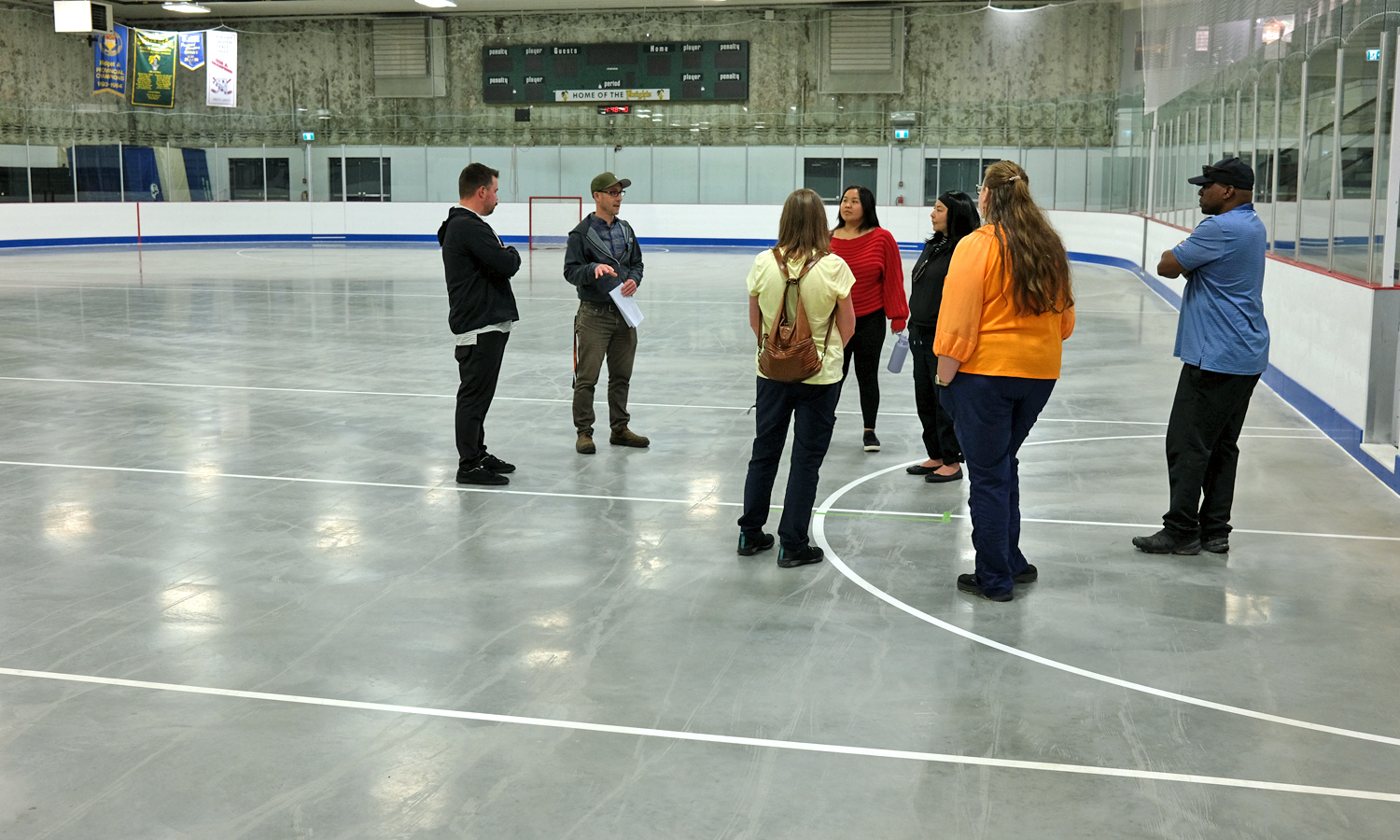
Journey to a Solution
The District of Mackenzie’s arena ice slab, originally installed in 1974, had reached the end of its service life. Recent brine leaks further underscored the urgent need for replacement. The arena is part of the local Recreation Centre, which also includes a pool and the community library. This provided the opportunity to incorporate an energy system that recognizes complementary heating and cooling needs that might be simultaneous within the facility, transferring heat from ice-making in the arena, for example, to the pool.
The core of the energy system that was designed is a heat recovery system that uses a heat pump to capture waste heat from the ice arena to warm the pool and other facility spaces, reducing the need for the facility’s natural gas boilers. To offset the electrical demand of the heat pump, a 642 square metre, 129kW solar array would be installed, projected to generate 146,805 kWh of electricity per year.
The total project budget of nearly $3.7 million wasn’t affordable for the municipality on its own so grant funding was sought. The Government of Canada's Green and Inclusive Community Buildings program and the South Peace Mackenzie Trust contributed $2.7 million to the total cost, cutting the municipality’s portion by more than 70%.
Construction began in July 2024. The aging arena slab and inefficient HVAC systems were replaced, solar panels were installed, and the project was completed before the end of 2024.
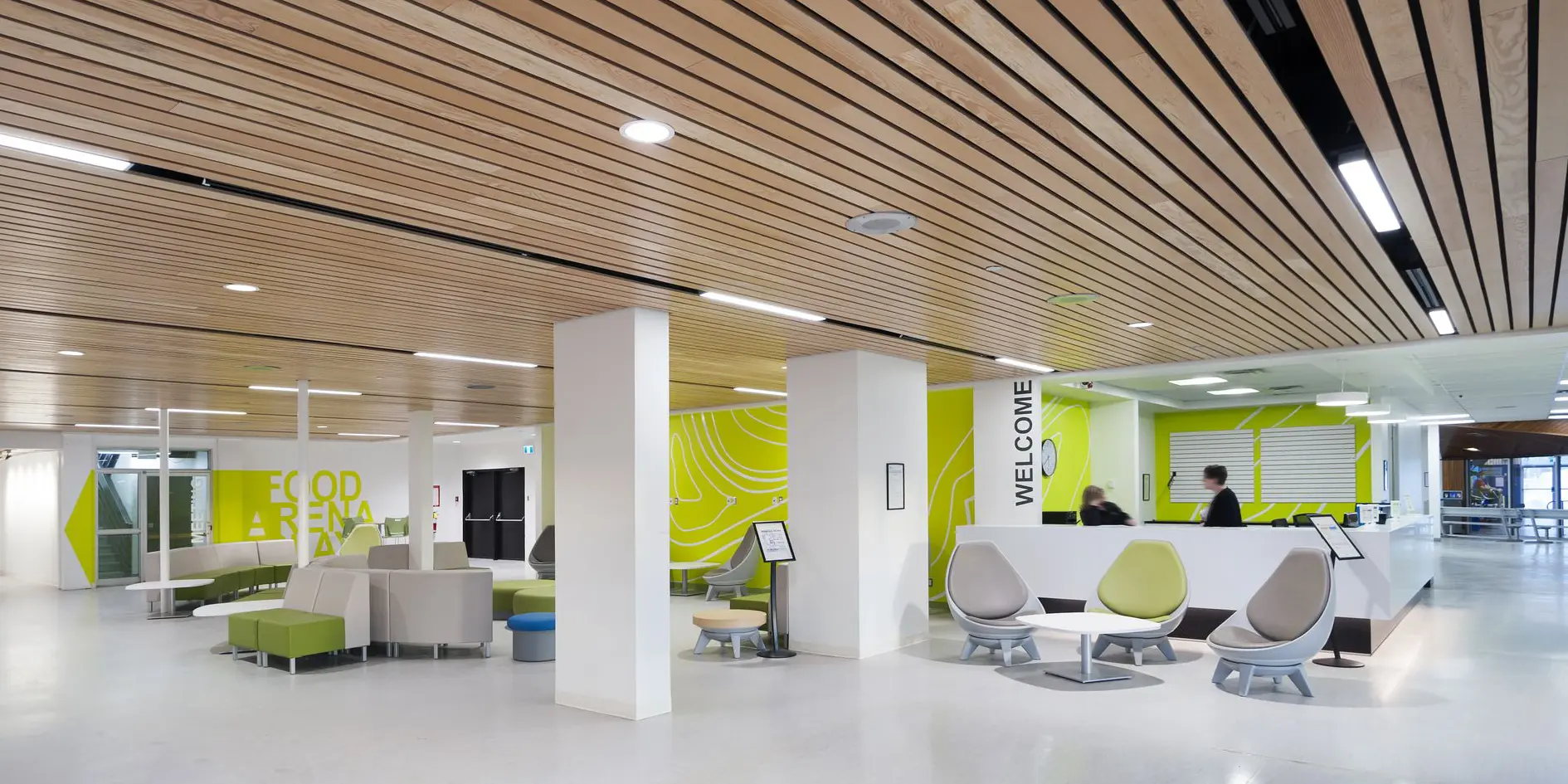
Outcomes
1. Savings
This project’s core efficiency measures — including solar energy, upgraded insulation, and advanced heat pumps — are reducing natural gas consumption by 36% and electricity usage by 9%. This enhanced energy efficiency is translating into significant annual reductions in both greenhouse gas emissions (158 tonnes) and water (nearly 1.4 million litres).
2. Reliability
The new refrigeration system not only prevents frost heave in the arena, but also acts as a thermal battery, storing energy for use when the refrigeration system is offline.
3. Comfort
The upgraded HVAC units improve air quality and comfort throughout the facility.
4. Lower maintenance
The new energy systems are enabling more efficient building operations and less wear-and-tear on equipment, such as the condenser, which now runs much less during the winter.
5. Leadership
The project is a cornerstone of Mackenzie’s efforts to revitalize the community and portray itself as a leader rather than as a victim of an evolving natural resource sector that has significantly reduced the community’s population. In 2025, the completion of the arena project earned Mackenzie the Community Leadership Award for Environmental Stewardship from the North Central Local Government Association.
Contributors

Rob van Adrichem
Director of External Relations
Community Energy Association
Funding for this case study provided by:



Related Content
Saulteau First Nations’ Community-Wide Residential Solar Program
The Saulteau First Nations is installing solar panels on nearly all of the homes in their community, bringing benefits ranging from cost-savings to community capacity and skill development, all in a region with cold and dark winters.
